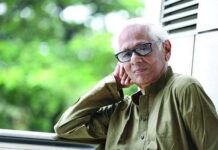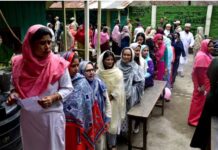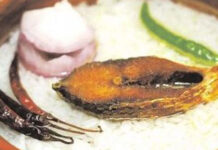Bangladesh had a history with the garment industry before it was even a country.
Men pole a dugout canoe on the Shitalakshya River.
A week ago, the last body of 1,127 was recovered from a collapsed textile factory on the outskirts of Dhaka, Bangladesh—the largest garment-industry disaster in the country’s history. Hundreds of other textile factories in Bangladesh reopened Friday after shuttering earlier in the week in response to worker protests over poor pay and unsafe conditions.
It’s a complicated moment for an industry that today accounts for nearly 80 percent of Bangladesh‘s exports, marks it as the second-largest textile producer in the world, and is the source of four million jobs—many of which pay less than $2 (U.S.) a day.
Bangladesh and textiles have a long relationship. Husband-and-wife photography team Jean and Franc Shor’s notes on the back of this early 1950s photo locate this dugout canoe on the Shitalakshya River, just north of the city of Narayanganj—by then already a garment trade hub specializing in muslin and jute. Today Narayanganj continues to be an important river port and a center of jute trade for Bangladesh.
The notes also alternately label the country “East Pakistan” and “East Bengal.” Bangladesh was still two decades from independence.
In 1947—just a few years before the Shors snapped this shot, and soon after British rule ended in South Asia—Pakistan became an independent country. But it was a country divided by the bulk of India. West Pakistan sidled up to Afghanistan.
East Pakistan—tucked under Nepal and beside Burma, heavily silted by the Ganges and Brahmaputra rivers and their tributaries—became Bangladesh in 1971.
Source: National Geographic










